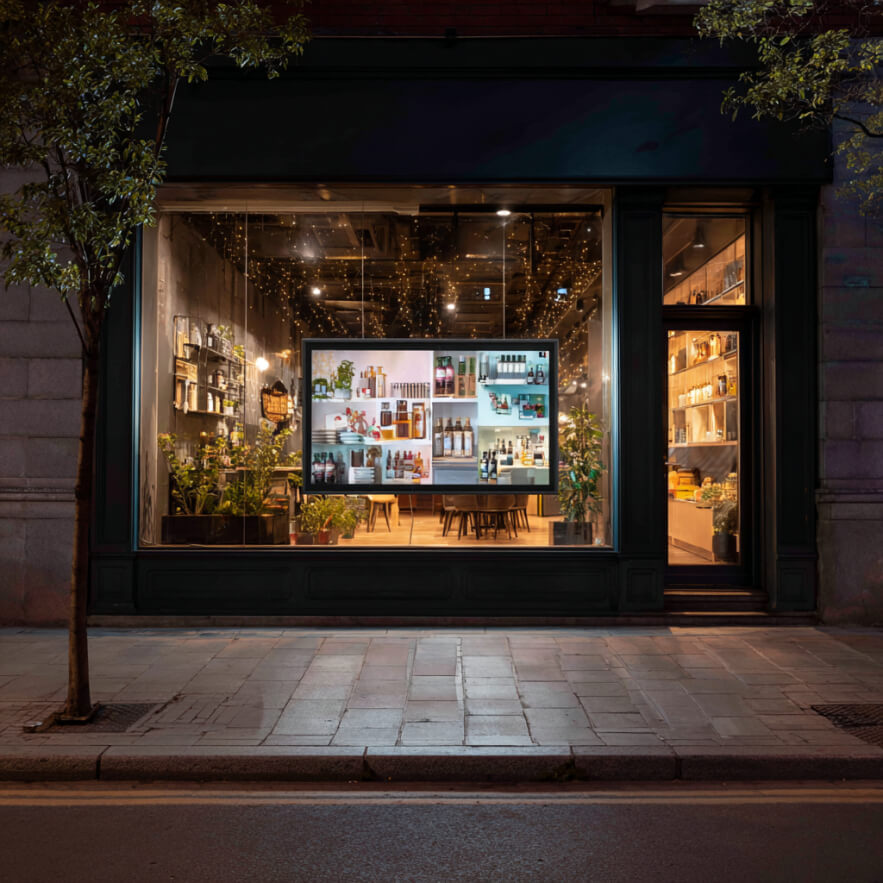A store is no longer defined by four walls. A customer might discover a product on Instagram, test it in person, order it through an app, and pick it up from a smart locker—all in one day. Merging digital channels with physical presence has become a must-have, not just a trend. It’s not enough to have a website and a street address—you need a flexible ecosystem where online and offline support each other instead of competing.
The new storefront: why digital brands need physical presence
Even the most advanced digital brands now need a physical footprint. Why? Because customers crave tactile contact. They want to see, touch, smell, and compare. Offline builds trust. Studies show conversion rates increase when customers engage with a brand in real life.
Opening a physical location doesn’t always mean opening a full store. Often, it starts with a showcase—a pop-up, an installation, or a test kiosk in a coworking space or gallery. It’s not about scale but impact: to be remembered. Some brands use a “window-only” model—glass displays with QR codes where customers can browse and buy without entering.
Tech-forward brands go further. They embed screens in storefronts and use responsive displays that adjust based on weather, time of day, or foot traffic. In some cases, the display recognizes a regular customer via smartphone ID and offers a tailored promotion.
Physical locations are no longer just points of sale. They are touchpoints where visitors can test a product, feel the vibe, ask questions, or subscribe to updates. This breaks down the barrier between the brand and the street, turning it into a part of urban life.
Customer experience starts with the window—but it’s the ambiance that stays with you. Discover how next-gen perfume boutiques create spaces where design, comfort, and fragrance work in harmony.
How online can amplify the street presence
People often assume digital kills local retail. In reality, online activity strengthens physical retail—when integrated properly. The key is to create connections that make each channel work better.
For example, a shop tucked away on a quiet street may draw most of its traffic from targeted social ads. A user sees a product in a story, clicks, and finds out they can pick it up just around the corner. The offline location anchors the brand, while online attracts the crowd.
It’s essential to build omnichannel paths. Someone may start shopping online and finish in-store—or the other way around. They discover a product on a website, reserve it, visit the store to feel it in person, and pay there. Or they visit a boutique, try the item, and buy it later from home. The trick is not to lose them between steps.
Digital tools make physical locations more interactive: in-store tablets for browsing, AR mirrors for product testing, or instant feedback stations. These tools not only improve convenience but generate insights for service optimization.
Store design for digitally fluent customers
Physical retail spaces are now designed with the understanding that customers arrive informed. They know the price, specs, and have likely read reviews. The goal is no longer to “sell” but to create an environment for confident decisions.
Many stores are divided into two zones: fast (for pickups, returns, quick errands) and slow (for discovery, conversation, and inspiration). This mirrors online behavior—think one-click buys vs. long browse sessions.
Design must be flexible and updatable. Unlike the old model of 5–10 years per store concept, modern layouts are built to adapt frequently. Digital windows, mobile shelves, scenographic lighting—interiors evolve with new product drops.
Phones play a huge role. People take pictures, share stories, scan codes, tag locations. Every area is a potential stage. A photogenic backdrop, clean logo, and smart lighting become part of the brand’s visual identity.
CRM integration and behavior on the street
True online-offline integration isn’t possible without data. Knowing your customer—their history, interests, and behavior—makes it possible to deliver timely, relevant offers. And that means more than just maintaining a contact list. It requires active CRM usage.
Your system should track: what the person viewed, whether they clicked an ad, opened an email, how often they visit in person. This enables smart offers. For example, if someone browses perfumes often, the next store visit might include a personal sample tied to that history.
It’s also vital not to overwhelm the customer. Smart stores use micro-triggers: subtle reminders, geo-targeted push notifications, and gentle nudges for familiar products when someone is near a store. This only works with precise segmentation.
Train your staff to work with these insights. When a consultant sees a client with a browsing history, they don’t start with “Can I help you?”—they lead with something tailored. That saves time and adds meaning to the interaction.
What works: examples and tactics
Many successful online-offline integrations aren’t about technology—they’re about human experience. People don’t want wow effects—they want ease, clarity, and real value. Here’s what works:
- digital storefronts where you can order without entering the store
- in-store QR pickup for personalized orders
- emails showing what’s in stock nearby
- NFC-enabled products that give info instantly
- unified accounts across all channels
Partnership formats are also effective. For example, an online brand might use a coffee shop or studio as a pickup point. It cuts costs, boosts foot traffic, and integrates the brand into daily routines.
Mobile storefronts are another win—pop-up units in parks, festivals, or office zones. People can test products, subscribe to newsletters, get samples or promo codes.
Questions and answers
It builds trust, offers real product interaction, and connects the brand to the city’s everyday life.
Link them via CRM, shared workflows, and space designed for the customer’s digital habits.
QR codes, personalized pickup, geo-based push notifications, unified accounts, and mobile displays.

